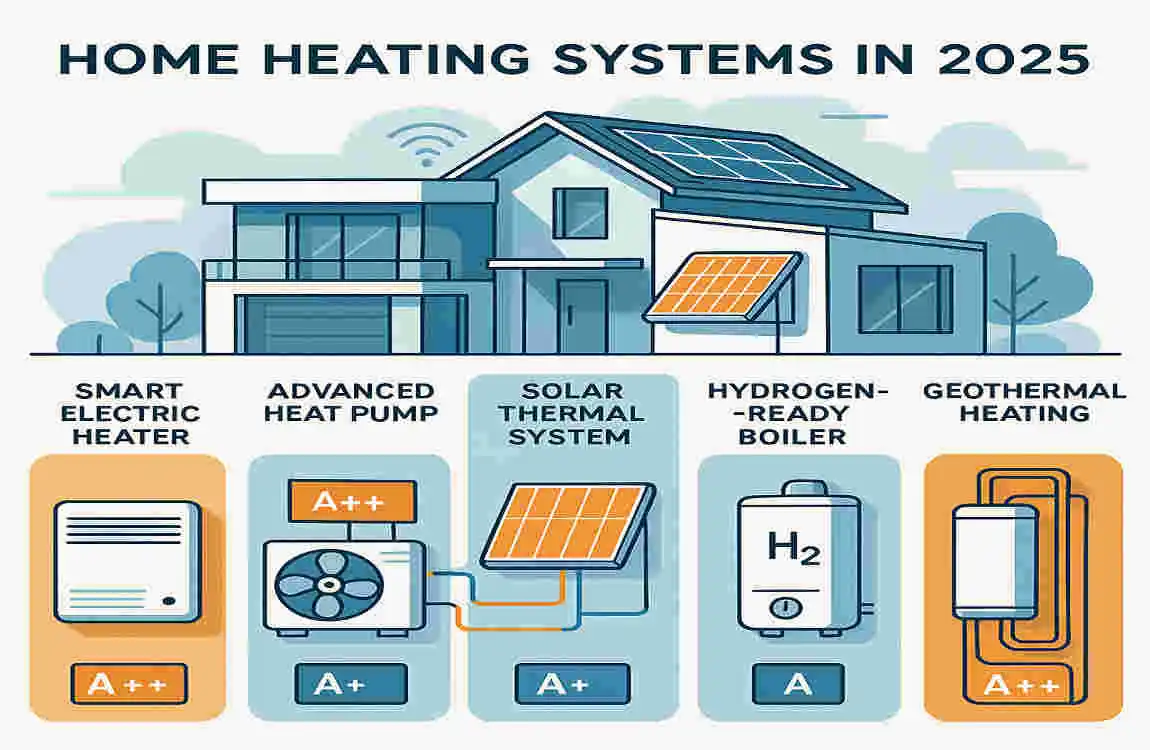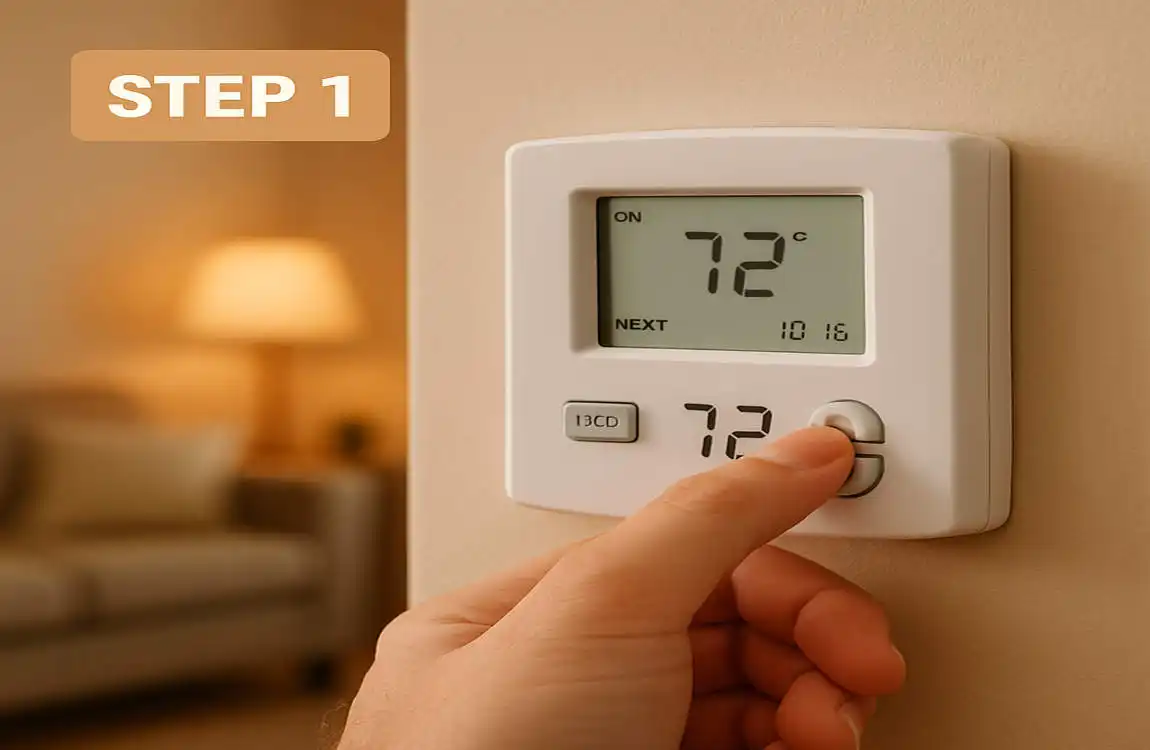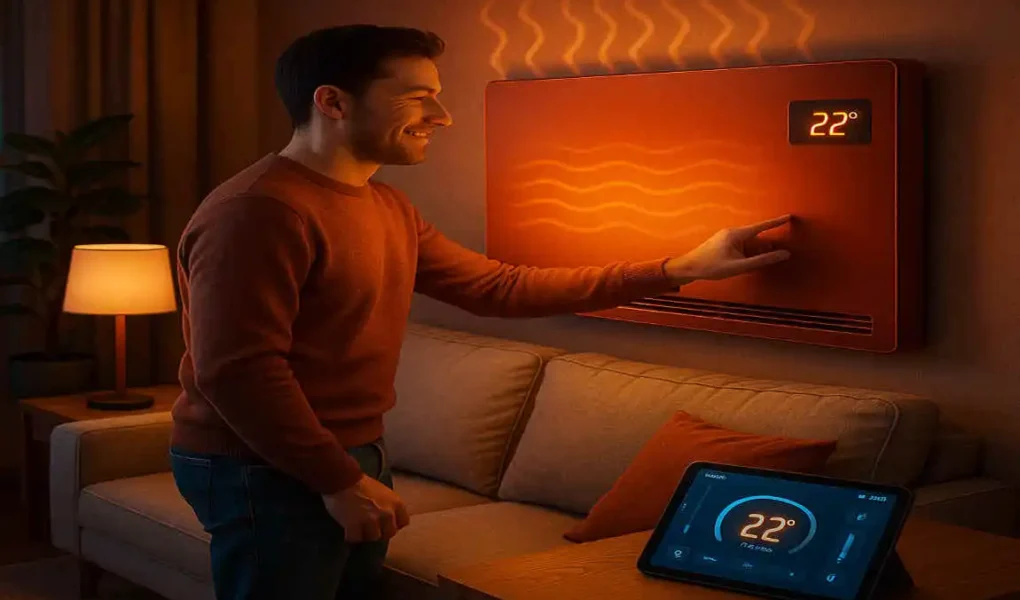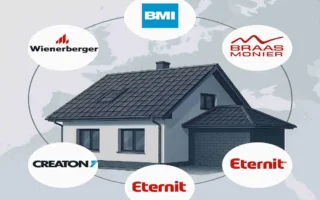As the chill of winter sets in, there’s nothing more comforting than the warmth of a cozy home. But in 2025, with evolving technology and energy-efficient systems, knowing how to properly turn on and operate your home heater is more important than ever.
Understanding Different Types of Home Heaters in 2025

Before diving into the specifics of turning on your heater on, it’s essential to understand the type of system you have. Heaters come in various forms, and their features can influence how you operate them.
Popular Heater Types in 2025
- Electric Heaters: These are powered by electricity and are often portable. They’re great for small spaces and are easy to operate with simple controls.
- Gas Heaters: Fueled by natural gas or propane, these heaters are energy-efficient and effective for larger homes. However, they require proper ventilation.
- Oil Heaters: These use oil as fuel and are typically used in older homes. While they provide consistent heat, they require regular maintenance.
- Infrared Heaters: Known for their speed and efficiency, infrared heaters heat objects directly rather than the air, making them perfect for quick warmth.
- Smart Heaters: The latest advancements in heating technology, smart heaters connect to Wi-Fi, allowing you to control them via apps or voice assistants.
Key Features to Look For
- Thermostat Control: Many modern heaters come with programmable thermostats, enabling you to set precise temperatures.
- Eco-Modes: These energy-saving modes automatically adjust the heater’s output to maintain efficiency.
- Smart Integration: With smart home systems becoming the norm in 2025, many heaters now work seamlessly with devices like Alexa or Google Home.
Energy Efficiency Considerations
Each heater type has different energy efficiency levels. For example, gas heaters are cost-effective for larger areas, while electric heaters are ideal for focused heating. Smart heaters often come with advanced energy-saving features, such as learning your schedule and auto-adjusting temperatures.
Preparing Your Heater for Use: Safety and Maintenance Checks
Before you even think about turning on your heater, make sure it’s safe to use. Neglecting basic safety and maintenance checks can lead to inefficiency, high energy bills, or even dangerous situations.
Why Safety Comes First
Heaters, especially gas- or oil-fired ones, can pose risks, such as carbon monoxide leaks or fire hazards, if not properly maintained. Even electric heaters can overheat or cause electrical issues if the wiring is damaged.
Steps to Prepare Your Heater
- Clean Filters and Vents: Dust and debris can accumulate, reducing airflow and efficiency. Clean or replace filters as needed.
- Inspect for Damage: Check for cracks, leaks, or other visible damage in the heater and associated components.
- Ensure Proper Ventilation: If you’re using a gas or oil heater, keep the room well-ventilated to prevent harmful gas buildup.
- Test the Thermostat: Set your thermostat to a low temperature and gradually increase it. Ensure that the heater responds accordingly.
- Check Power Connections: Make sure all cords are secure and in good condition. For gas heaters, inspect the fuel line for leaks.
Seasonal Maintenance Tips
In 2025, many heaters will come with self-diagnostic features that alert you to maintenance needs. However, it’s still wise to schedule an annual professional inspection to keep your system running efficiently.
Step-by-Step Guide: How to Turn On a Heater in Your Home

Now that your heater is prepped and ready, it’s time to turn it on. While the exact process may vary depending on the type of heater, the following general steps will help you get started.
Check the Power Source and Connections
- Electric Heaters: Plug the heater into a grounded outlet and ensure the switch is in the “off” position before powering it on.
- Gas Heaters: Confirm that the gas valve is open and there are no leaks. Use a gas leak detector if necessary.
- Smart Heaters: Ensure the device is connected to your Wi-Fi network and powered on.
Adjust the Thermostat
Set your thermostat to a comfortable temperature. For most homes, 68°F to 72°F is ideal for staying cozy while minimizing energy use. Modern thermostats often offer precise control, so take advantage of features like zoning and scheduling.
Power On the Heater
- For Electric Heaters: Flip the power switch and select your desired heat setting.
- For Gas Heaters: Follow the manufacturer’s instructions to ignite the pilot light or activate the electronic ignition system.
- For Smart Heaters: Use your app or voice assistant to adjust settings and turn the heater on.
Use Smart Features
In 2025, most heaters will come equipped with innovative features. You can:
- Set schedules to heat your home only when needed.
- Use voice commands like, “Alexa, turn on the living room heater.”
- Monitor energy usage through mobile apps.
Monitor for Proper Function
Once the heater is on, keep an eye (or ear) out for anything unusual:
- Is the heater producing consistent heat?
- Are there any strange noises or smells?
- Is the thermostat displaying accurate temperatures?
Troubleshooting Common Issues
- Heater Won’t Turn On: Check the power source, thermostat settings, or fuel supply.
- Uneven Heating: Ensure vents or radiators aren’t blocked.
- Strange Smells: Dust buildup can cause a burning smell initially, but if it persists, turn off the heater and inspect for issues.
Maximizing Cozy Warmth While Saving Energy in 2025
Staying warm doesn’t have to mean sky-high energy bills. By adopting a few innovative strategies, you can keep your home comfortable while minimizing costs.
Tips for Energy-Efficient Heating
- Use Smart Thermostats: Schedule heating for when you’re home and lower the temperature when you’re out.
- Optimize Room Temperatures: Bedrooms can be slightly cooler than living areas for better sleep quality.
- Seal Heat Loss Points: Use insulated curtains, weather stripping, and door draft blockers.
- Use Timer Settings: Set your heater to turn on 30 minutes before you wake up and off when you leave for work.
Table: Recommended Temperature Settings by Room
Room Type Recommended Temperature (°F)
Living Room 68-72
Bedrooms 60-67
Bathrooms 70-75
Kitchen 65-70
Common Mistakes to Avoid When Turning On Your Heater
Even with the best intentions, some common mistakes can lead to inefficiency or safety hazards.
Mistakes to Watch Out For
- Ignoring manufacturer instructions for your specific heater type.
- Setting the thermostat too high wastes energy.
- Forgetting to clean filters or vents.
- Overlooking unusual noises or smells, which could indicate a problem.
- Using the heater in poorly ventilated spaces.
When to Call a Professional for Heater Issues
Sometimes, DIY troubleshooting isn’t enough. Knowing when to call a professional can save you time, money, and stress.
Signs You Need Expert Help
- The heater refuses to turn on despite checking all connections.
- You notice a persistent gas smell.
- The heater makes loud or unusual noises.
- Heating is uneven, or the system cycles on and off frequently.
In 2025, finding a qualified technician is easier than ever thanks to online platforms and innovative apps that connect you with trusted professionals.




